Posted: Monday, September 7, 2020
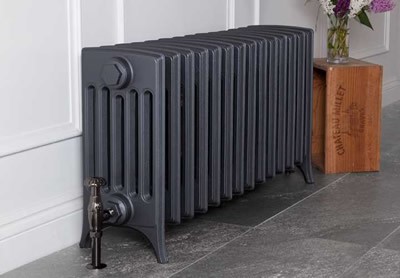
Whether it’s your bathroom or kitchen, saving space is a must to ensure you aren’t wasting the surface area, especially in a smaller room.
That’s what makes a heated towel rail so popular. Capable of heating a room as well as drying and warming your towels, these versatile fixtures come in a range of styles and sizes to match any decor you may have. But there’s an important question many of us ask, can you replace a radiator with a heated towel rail?
Trads is here to help answer that question and explain everything about heated towel rail, including how to fit one. Read on to find out more...
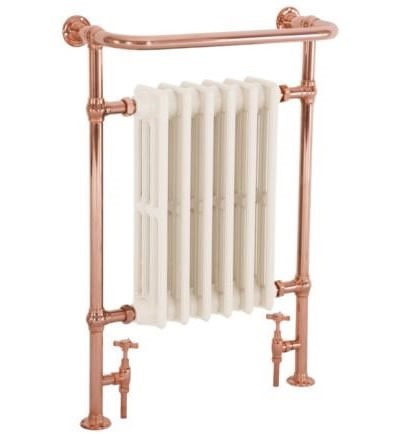
Pictured: Broughton Copper Towel Rail - 960mm x 675mm
A heated towel rail or towel radiator is designed to heat towels before and after using them. The towel rail can also act as a bathroom heater, depending on the space, suitable for drying and heating towels as well as the air in the room. There are two types of heated towel rail, traditional models that are plumbed like a radiator from a boiler, and electric models.
If you’d rather have something different to all the contemporary towel radiator designs on the market, then a traditional towel radiator is for you. Our traditional heated towel radiators combine classic styling and a rust-free lifespan with modern technology and will look stunning in any traditionally-styled bathroom with complementing bathroom accessories.
One of our traditional towel rails is the perfect solution for a bathroom. Not only do they provide just as much heat as a regular radiator, but also allow you to keep your towels dry and fluffy.
While a traditional heated towel rail requires more vertical wall space than a standard radiator, they can help you save on space by combining your radiator and towel rail into one item. This is especially true if you choose a wall-mounted option.
If you do have enough space, a floor-mounted Victorian towel radiator is a wonderful choice to really bring some character into your room. Many of our options come with an integral cast iron radiator set into the rail, creating a lovely decor feature.
As part of our traditional towel radiator range, we also offer an array of sizes with varying BTU outputs, so you can ensure you get just as much heat as you would from a regular radiator. However, if you do need a second radiator for your bathroom, take a look at all of our cast iron radiators to see some fantastic options.
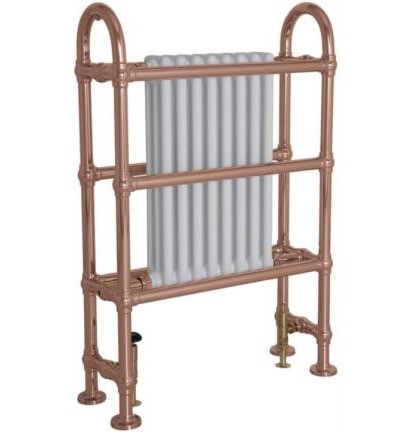
Pictured: Horse Copper Towel Rail - 1000mm x 650mm
Most heated towel rails provide enough heat for your entire bathroom while, obviously, keeping your towels warm, cosy and fluffy. If you have a larger bathroom, it may need an additional source of heating than a single heated rail to warm the room space sufficiently.
The majority of UK bathrooms are small, so while the room itself can be fairly cold with tiled walls and floors, you shouldn’t go over the top when it comes to heating. Small spaces can heat up surprisingly fast - particularly if there are fewer windows to release the heat. A heated towel rail can heat an entire bathroom so long as it’s the correct size.
This is where the BTU - British Thermal Unit - comes in.
What you should do first is measure the width, height and length of your bathroom in metres and make a note of each of these measurements. Then measure the area of the window. You can do this by multiplying the height by the width.
Now, you should now have four separate measurements written down. Take the width, height and length figures and multiply these together. Then, use this resulting figure and multiply it by the window area. The total you should have is the BTU for your bathroom.
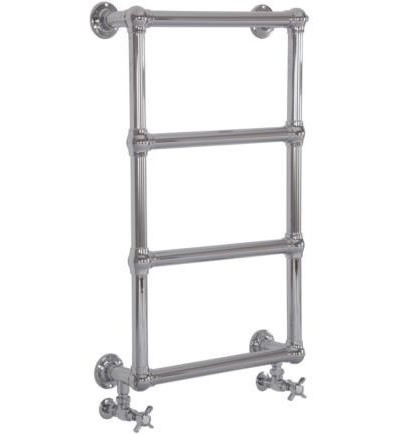
Pictured: Bassingham Chrome Towel Rail - 770mm x 500mm
If you are competent at DIY and have the required tools, then replacing your radiators with a water-filled heated towel rail could be something you can tackle yourself.
Most of us, however, will need to get the professionals in to do the job. You’ll need to get hold of a plumber for a heated towel rail which will be attached to the central heating system.
There will also be restrictions on where in the bathroom you can locate it, as not all rails can be used within a certain distance from water. If you already have a radiator, it’s easier to replace it with a heated towel rail. Check the specifications of the towel rail you’re thinking of buying and get advice if confused.
Remember that a bathroom is split into different zones - four in total. These zones are based on the risk level of water getting close to an electrical supply, your lighting for example. This poses a risk of electric shock. Each zone dictates which equipment can be fitted there.
The four zones are:
Below are the processes for connecting a towel radiator to the current pipework and connecting new pipework.
Before doing anything, it’s important that you remove all packaging and inspect your towel radiator as soon as you receive it. If there is an obvious issue, you can get it sorted there and then, rather than holding up your installation or waiting until you get going.
Always turn off your water supply before doing any DIY in the bathroom and wear protective clothing where necessary.
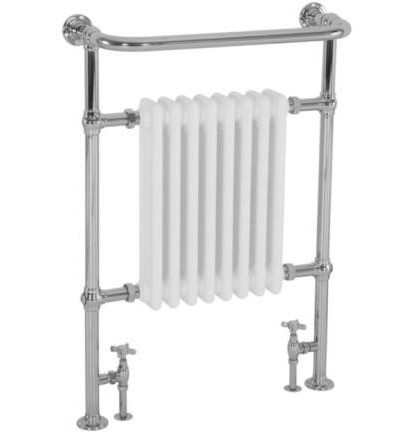
Pictured: Welbourne Chrome Towel Rail - 960mm x 670mm
This is replacing an old radiator with a new heated towel rail.
Are you looking for a beautiful new radiator to add to your home? Take a look at range of cast iron radiators to find yours today
Feel free to contact us if you need any help choosing a radiator
< Back To Blog